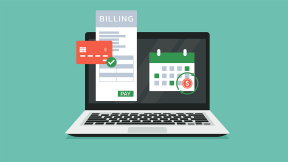Your FICO® score, explained

Credit scores influence many aspects of your life, like whether you get approved for a credit card or loan, what interest rate you pay and even the home you can purchase. Aside from the fact that FICO® and VantageScore® serve the same purpose as a credit score, the two are different when it comes to criteria and scoring models.
What is a FICO® score?
Your credit score is more than just a three-digit number. This score is used by lenders to determine your creditworthiness, in other words, how reliable you are as a borrower. They'll look at this score to see how likely you are to repay the amount that you're borrowing. So, the higher the score, the more likely lenders will trust you to pay back your loan in full and on time.
Several organizations might look at your credit score, including:
- Credit card companies
- Mortgage, auto loan and student loan lenders
- Property managers and landlords
- Insurance companies
- Potential employers
Your credit score is used to review your financial situation, including payment history, length of credit history, how much credit you're using and other factors. This data is gathered by credit bureaus, also called credit-reporting agencies, and compiled into credit reports. The three most popular bureaus are Equifax®, Experian™ and TransUnion®.
VantageScore® and FICO® score are the two major scoring systems that financial institutions use to measure your creditworthiness. Generally, they both use a credit score range of 300 to 850. If you're wondering if FICO® or VantageScore® is the same as a credit score, they're pretty much all referring to the same thing which is a type of credit scoring model.
The FICO® credit score model
The FICO® credit score model is calculated with software from Fair Isaac Corporation (FICO®) and is used in the majority of lending decisions. Lenders take your FICO® score into account to help make accurate, reliable decisions regarding credit risk. FICO® scores range between 300 and 850 and are calculated using only information in a consumer's credit report maintained by the credit bureaus. You must have a credit account at least six months old and activity during the past six months.
Generally, scores in the 670 to 739 range indicate that you have a “good" credit history, which is considered favorable to most lenders. Borrowers in the 580-669 range may have a harder time obtaining financing at a desirable rate. This may be because of several factors including an insufficient credit history, a pattern of late payments, a default on a loan, a bankruptcy filing or other factors.
FICO® scores can be broken up into five ranges:
- Exceptional: 800+
- Very Good: 740 to 799
- Good: 670 to 739
- Fair: 580 to 669
- Poor: 579 and below
FICO® has more than a dozen credit scoring versions broken up into base scores and industry-specific scores. Base scores show your likeliness to repay things like your credit card bill or loans. Industry-specific scores represent the likeliness to repay things like auto loans or mortgages.
How is a FICO® score calculated?
FICO® breaks its scoring criteria down into five categories, with a percentage value based on how important the category is, which may vary for individuals.
- Payment history: 35%
- Amounts owed: 30%
- Length of credit history: 15%
- Credit mix: 10%
- New credit: 10%
The exact percentage value differs depending on your overall credit file and the scoring model used, understanding the breakdown and importance of each factor can help you improve your FICO® score.
Which scoring version is used for a mortgage and an auto loan?
To help lenders make prudent decisions, the FICO® Score algorithm has been updated several times over the years. This is because we use credit much more often than we did several decades ago. As culture and consumer behavior evolves, the scoring model does as well. Although the most widely used version of the model is FICO® Score 8, this is not true of mortgages or auto loans. These types of loans often mean a very large amount of money is being requested, so earlier and more conservative versions of the algorithm are used. For example, for mortgages, Experian may use FICO® Score 2, and TransUnion may use FICO® Score 4.
What to look for when checking your FICO® score
Monitoring and checking your credit report regularly is a helpful way to keep track of your finances and keep an eye out on fraud. When checking your credit score and report, you'll want to check for anything, even errors, that could potentially make you seem like an undesirable borrower. With so much information listed on your credit report, it can be overwhelming to figure out what you should focus on. Below are some things you should detect when checking your credit score.
Personal information
- Incorrect or incomplete name, address or phone number
- Incorrect birth date
- Incorrect Social Security number
- Inaccurate employment information
Credit accounts
- Unrecognized accounts, including revolving (credit cards and HELOCs) and installment accounts (mortgages and loans)
- Closed accounts listed as open
- Incorrect limits and balances
- Inaccurate account holder status
- Incorrect payment history, such as an on-time payment marked with a late notification
- An open account that you didn't open
Public records
- Lawsuits and bankruptcies that you weren't involved in
- Lawsuits, bankruptcies, judgments or tax liens that should no longer be on record
- Paid tax, judgments or other liens listed as unpaid
Inquiries
- Companies that pulled your credit report without your authorization or knowledge
There are a few differences between FICO® scores and VantageScore®, as well as their scoring models. Even though they differ from one another, they both predict the same thing, which is your credit score, and use the same underlying data to determine it. Understanding what gets factored into your FICO® score can help you build good credit.
If you're looking to improve all your scores, focus on building a good credit history. Chase Credit Journey® is a free tool based on the VantageScore3.0 model that can help you understand what factors impact your credit score and help you learn ways to improve it. You don't have to be a Chase customer to get started.



